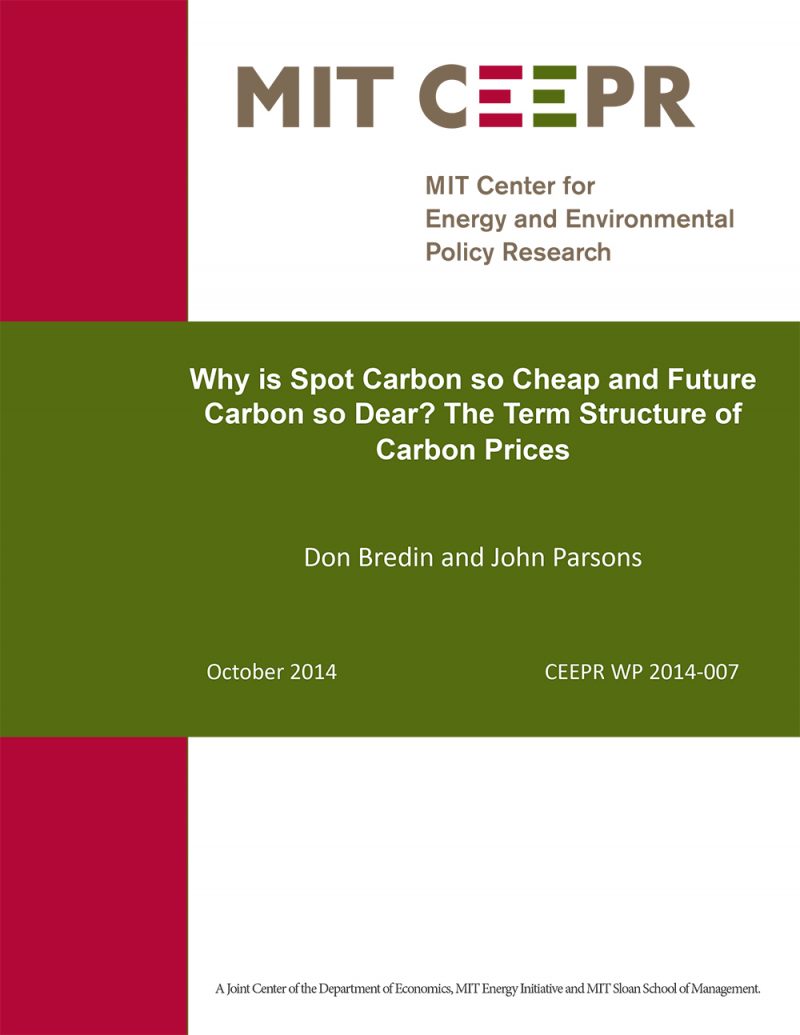Why is Spot Carbon so Cheap and Future Carbon so Dear? The Term Structure of Carbon Prices
Don Bredin and John Parsons
October 2014
This study examines carbon spot and futures price relationships and the dynamics of the carbon term structure in the European Union Emission Trading Scheme (ETS) between 2005-2012. Using spot and futures prices, we calculate an implied cost of carry. Using sequential futures prices, we calculate the implied forward cost of carry. Under the rules of the ETS, the cost of carry is – with some exceptions – just the opportunity cost of money, so that the term structure of the cost of carry should exactly equal the term structure interest rates. However, we show that spot carbon allowances were originally expensive relative to futures, but since late 2008 the situation reversed and spot carbon allowances have been persistently cheap relative to futures prices. That is, the return to holding a carbon allowance together with a short futures position was originally less than the interest rate, but since late 2008 has been much greater than the interest rate. The same result holds throughout the term structure: shorter maturity futures are cheap relative to longer maturity futures. This relationship is puzzling and deserves attention. It may reveal important facts about market expectations for the evolution of EU-ETS rules related to the banking of allowances across years. We fit the term structure of carbon prices to a popular model of the term structure of interest rates, and find a very different structure. Again our term structure analysis points to the theory not holding.



